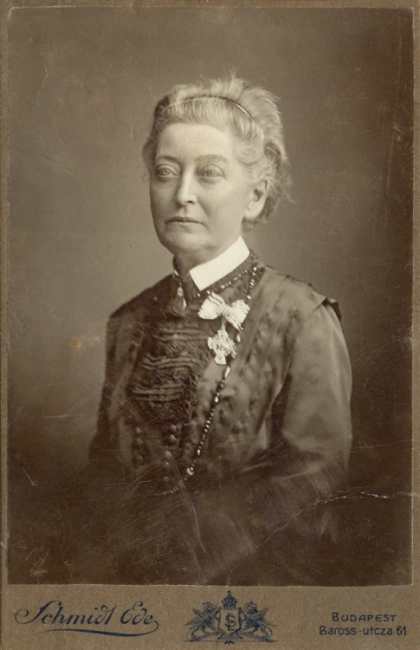Did you know? – Women can attend universities in Hungary for over 125 years

Hungarian women, just like all women in the past, have gone through difficulties and hardships to be allowed at universities.
On August 27, some Hungarian news sites, such as 24.hu and 444.hu, wrote about the obscene collection of 7 songs sent to the freshmen at the University of Veterinary Medicine. The sexualisation of women and the lyrics which mention sexual acts with animals were severely judged by the rector of the university, who banned the songs and ordered an ethical investigation. The President of the Student Government completely distanced themselves from the lyrics of the songs, which were never taken seriously, and were only a tradition in freshman camps. The songs are approximately 50 years old. He also said that they are banned now and will never be used again.
Little did these people know that women have come a long way, and they were allowed to be university students for the first time in Hungary circa 125 years ago.
And the path to higher education was indeed long and complicated. In 1777, Maria Theresa made education mandatory through the Ratio Educationis law. In the era, it seemed obvious that girls and boys have to learn different things, which was noticeable in II. Ratio Educationis of 1806. This document stated the importance of all-girl schools. Girls were taught the skills and knowledge necessary for being a good housewife. At this point, elementary schools were the same for boys and girls alike, as they studied in co-educated classrooms due to lack of space and teachers. Of course, teachers at the time could only be men. Girls were also educated in private institutions and church-run institutions where they learned about family life and some knowledge regarding humanities. The social status of students resulted in differences in the school curriculum.
In the second half of the 1800s, women were hired as secretaries, but they could also work at the Hungarian railways, post, or they could become elementary school teachers. In 1855, the first church-run elementary school teacher training institution opened, and the first state-run one opened in 1869. These were not considered higher education institutions, though.
In 1868, a law demanded the same curriculum to be taught to boys and girls alike. But even with this major change, even if girls could study further, their institutions were not regular high schools.
Also, girls could not get a graduation certificate (baccalaureate or A-levels, as we would call it these days). Finally, in 1895, girls could also take the graduation exams. Another important change happened in the 1840s when, due to the women’s movements that intensified in the era, Hungarian girls were able to start attending secondary schools and vocational training institutions.
Aristocrat Blanka Teleki expressed her views in the fierce temper of the revolution in 1848: “We were idolised puppets, let’s be human. The revolution demands people. Raise your daughters as human beings, not ephemeral beings to be married as soon as possible, as if the woman, like the butterfly, had reached its ultimate destination when the party [piece of clothing] was untied from her head.”

The first Hungarian woman to get a university degree was Vilma Hugonnai, who graduated med school in 1879 from a university in Switzerland. Unfortunately, Hungary accepted her degree only in 1897.
This was two years after Gyula Wlassics, the minister of religion and public education, allowed women to study medicine, humanities, and pharmaceutical studies. The new order was accepted on 19 December 1895. In Kolozsvár, the first woman started her studies in higher education in 1897.
Back then, it was still unusual for girls to study in a higher education institution, and many people pointed fingers at college girls.
However, the first lady to be admitted to a Hungarian university was Vilma Glücklich, who enrolled at the Faculty of Humanities of the then University of Budapest (Eötvös Loránd University today) where she studied Mathematics and Physics. The first woman to graduate from a Hungarian university was Sarolta Steinberger, an obstetrician-gynaecologist who graduated in 1900.
There was a time when aspiring female students could only apply to universities with the individual permission of the Minister of Culture, and from 1904, only women with outstanding results could apply. In 1927, more courses were made available for women, but they still could not study law and engineering.
The first Hungarian lawyer, Dr Margit Ungár, passed her bar exam with honours in June 1928. She was awarded her diploma in pink silk, tied with a golden ribbon, which was not the usual approach at the time. Women reached equality in university education as late as 1946.
The first Hungarian female veterinarian got her degree in 1937. Erzsébet Simonyi truly proved her skills to the world, becoming the first woman in the country to lead a research institution. From 1952 until 1971, she was the director of the Veterinary Vaccine Control Institute.
The first female veterinarian in the world was in fact an Irish woman named Aleen Cust. She finished her studies in 1900, but the chamber of veterinarians only accepted her as a member in 1919. In the United States of America, in 1939, there were 5,000 veterinarians, out of which 31 were women.
Source: jogiforum.hu, jelesnapok.oszk.hu, korzo.org.ro, ogyk.hu, tudas.hu, 24.hu, 444.hu








Now, we will have to fight to preserve women’s rights agains trans perverts. It is a traversity that we must fight.